
Browse an alphabetical list of photographs. These historical images portray people, places, and events before, during, and after World War II and the Holocaust.
<< Previous | Displaying results 491-500 of 2641 for "Photo" | Next >>
Benjamin Meed joins children in burying a time capsule during the Tribute to Holocaust Survivors: Reunion of a Special Family, one of the Museum's tenth anniversary events. Washington, DC, November 2003.
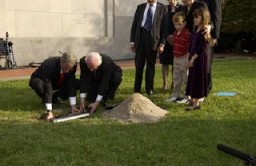
After the liberation of the Wöbbelin camp, US troops forced the townspeople of Ludwigslust to bury the bodies of prisoners killed in the camp. This photograph shows German civilians who were ordered to bury the dead; US troops stand in the background. Germany, May 7, 1945
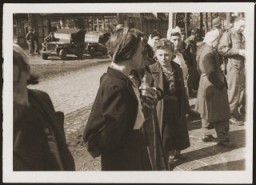
Buses that transported patients from the Eichberg hospital near Wiesbaden to the Hadamar euthanasia center, where the patients were gassed or killed by lethal injection. Germany, between May and September 1941.
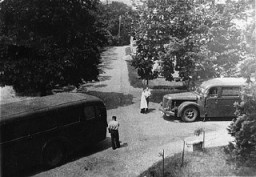
Buses used to transport patients from the Eichberg hospital near Wiesbaden to Hadamar euthanasia center. The windows were painted to prevent people from seeing those inside. Germany, between May and September 1941.

Buses waiting at the entrance to the Vélodrome d'Hiver, where almost 13,000 Jews were assembled before being transported to Drancy and other French transit camps. Paris, France, July 16 and 17, 1942.
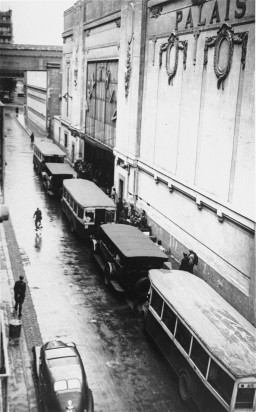
Portrait of Alfred Rosenberg. One of a collection of portraits included in a 1939 calendar of Nazi officials. Germany, 1939.
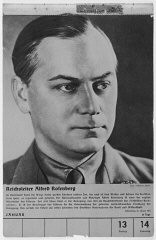
This photo shows a placard urging Hungarian Jews to unite against rising antisemitism in prewar Hungary and Europe. It rallies Jews to protest, using such phrases as: "Protect Jewish honor!”; “Do not buy from our enemies!”; and “Do not watch movies from the Third Reich." Hungary, 1937.
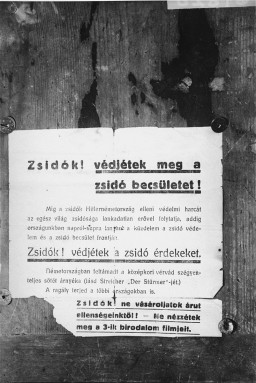
This camera equipment belonged to Walter Hunkler, a sergeant assigned to a medical detachment of the 160th Field Artillery Battalion, which entered Dachau on April 29, 1945. He took photographs documenting the camp and the prisoners found there.
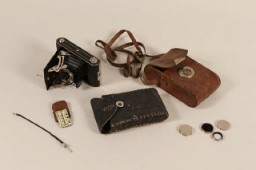
Camp commandant Amon Goeth delivers a speech to SS guards in the Płaszów camp. Płaszów, Poland, 1943-1944.

Romani (Gypsy) women boil laundry and hang it to dry in the middle of the camp at Marzahn. Germany, June 1936. Shortly before the opening of the 1936 Olympic Games in Berlin, the police ordered the arrest and forcible relocation of all Roma in Greater Berlin to Marzahn, an open field located near a cemetery and sewage dump in eastern Berlin. Police surrounded all Romani encampments and transported the inhabitants and their wagons to Marzahn.
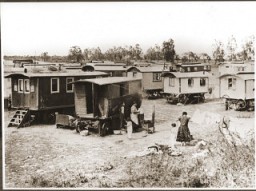
We would like to thank Crown Family Philanthropies, Abe and Ida Cooper Foundation, the Claims Conference, EVZ, and BMF for supporting the ongoing work to create content and resources for the Holocaust Encyclopedia. View the list of donor acknowledgement.